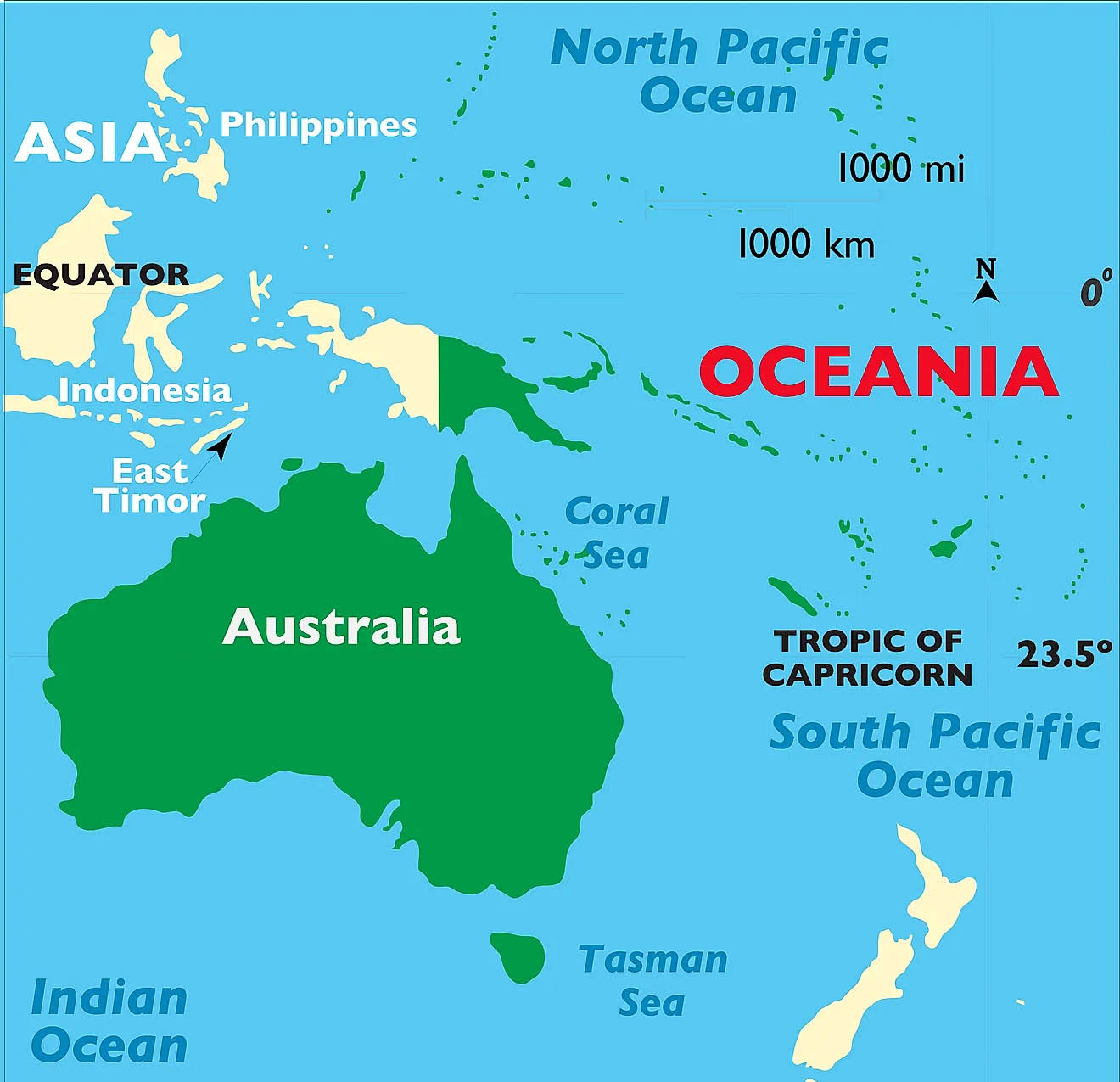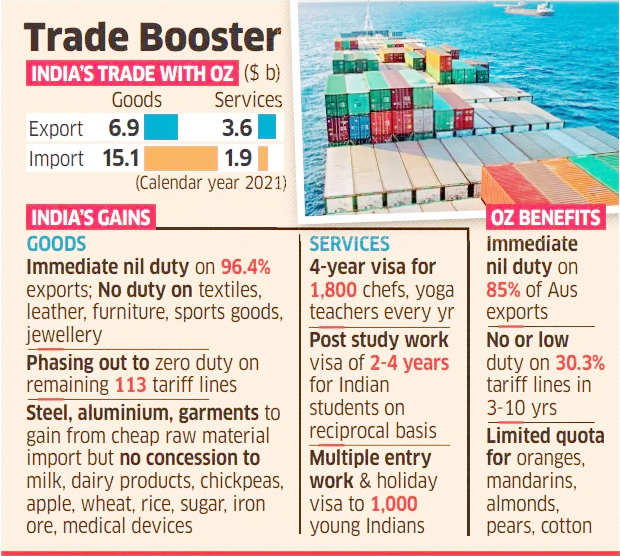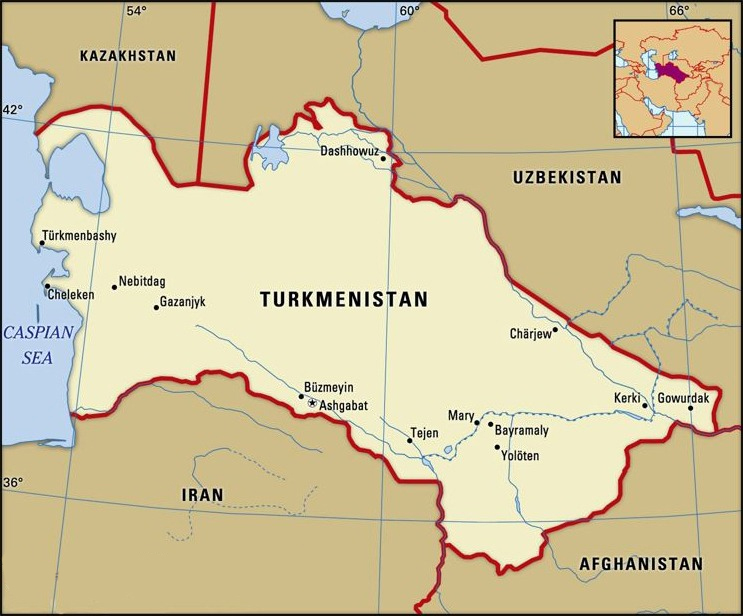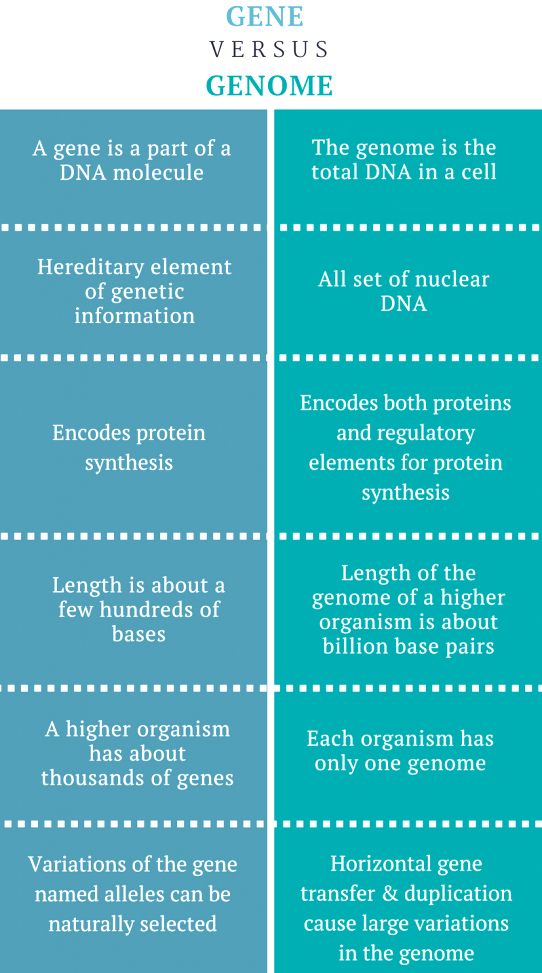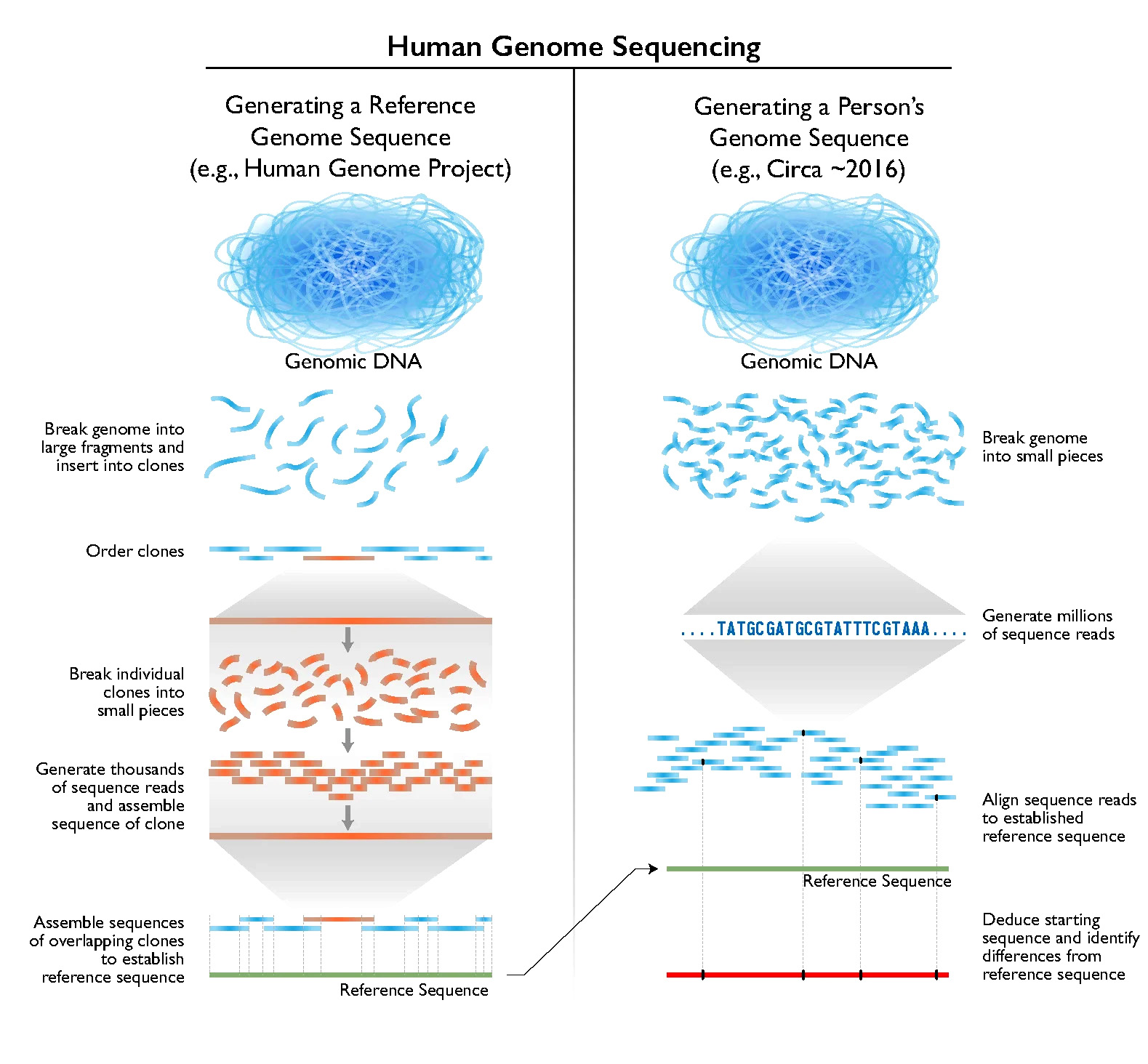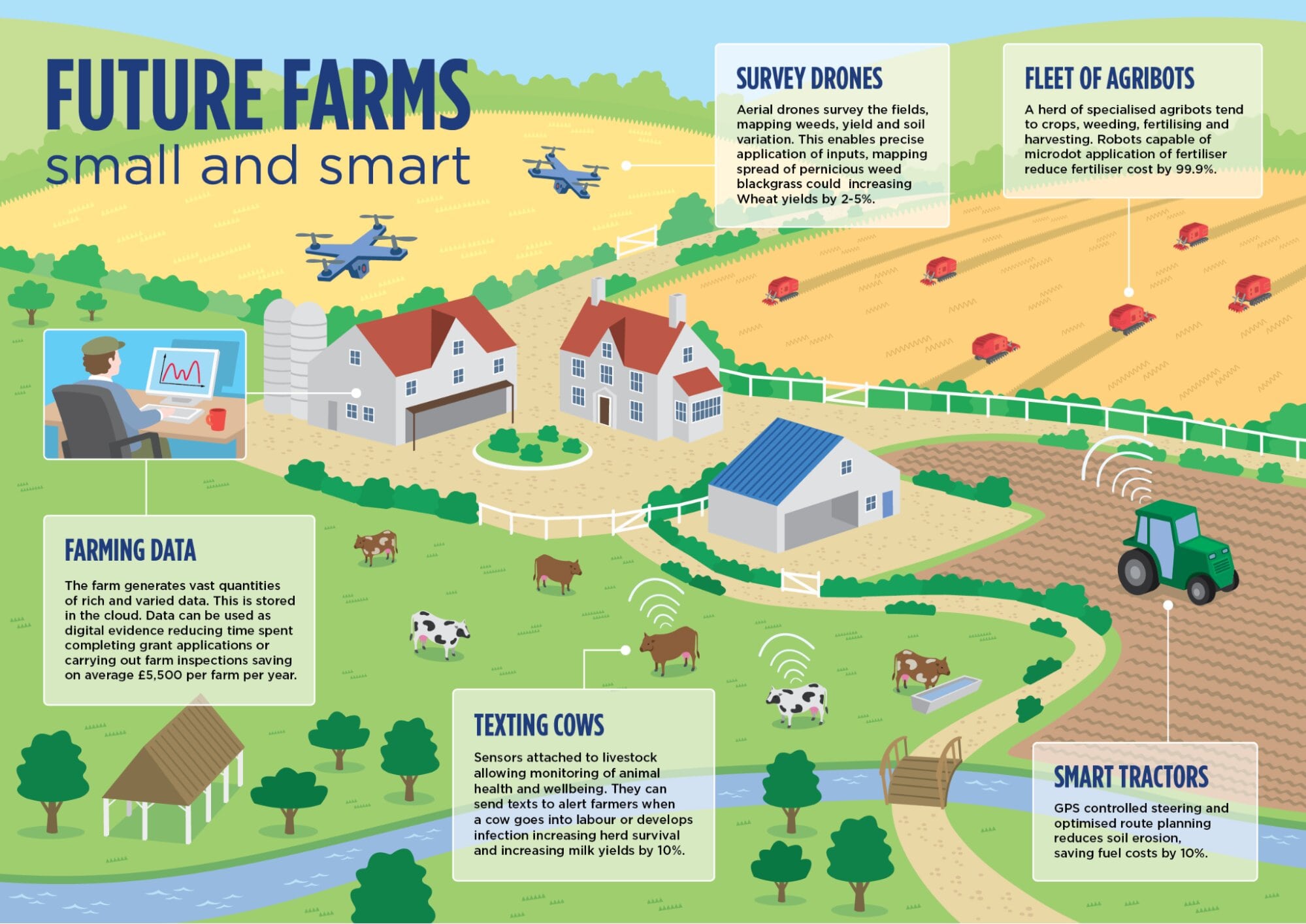International Relations
India-Australia Economic Cooperation and Trade Agreement
For Prelims: Economic Cooperation and Trade Agreement, Free Trade Agreement, CEPA, CECA, Supply Chain Resilience Initiative, QUAD, UNCLOS, Location of Australia and the Neighbourhood.
For Mains: International Treaties & Agreements, Government Policies & Interventions, Groupings & Agreements Involving India and/or Affecting India's Interests, Economic Cooperation and Trade Agreement, Free Trade Agreement and its Significance.
Why in News?
Recently, India signed a historic trade agreement with Australia, the India-Australia Economic Cooperation and Trade Agreement (Ind- Aus ECTA).
- In February 2022, India and Australia announced that they were going to sign such an agreement.
- The negotiations for India-Australia ECTA were formally re-launched in September 2021 and concluded on a fast-track basis by the end of March 2022.
What is the Economic Cooperation and Trade Agreement?
- It is the first Free Trade Agreement (FTA) that India has signed with a major developed country in over a decade.
- In February, India signed an FTA with the UAE and is currently working on FTAs with Israel, Canada, UK and the European Union.
- The Agreement encompasses cooperation across the entire gamut of bilateral economic and commercial relations between the two friendly countries, and covers areas like:
- Trade in Goods, Rules of Origin.
- Trade in Services.
- Technical Barriers to Trade (TBT).
- Sanitary and Phytosanitary (SPS) measures.
- Dispute Settlement, Movement of Natural Persons.
- Telecom, Customs Procedures.
- Pharmaceutical products, and Cooperation in other Areas.
- ECTA provides for an institutional mechanism to encourage and improve trade between the two countries.
- The ECTA between India and Australia covers almost all the tariff lines dealt in by India and Australia respectively.
- India will benefit from preferential market access provided by Australia on 100% of its tariff lines.
- This includes all the labour-intensive sectors of export interest to India such as Gems and Jewellery, Textiles, leather, footwear, furniture etc.
- On the other hand, India will be offering preferential access to Australia on over 70% of its tariff lines, including lines of export interest to Australia which are primarily raw materials and intermediaries such as coal, mineral ores and wines etc.
- Under the agreement, Indian graduates from STEM (Science, Technology, Engineering and Mathematics) will be granted extended post-study work visas.
- Australia will also set up a programme to grant visas to young Indians looking to pursue working holidays in Australia.
What is the Significance of the Agreement?
- It will provide zero-duty access to 96% of India’s exports to Australia including shipments from key sectors such as engineering goods, gems and jewellery, textiles, apparel and leather.
- It will boost bilateral trade in goods and services to USD 45-50 billion over five years, up from around USD 27 billion, and generate over one million jobs in India, according to a government estimate.
- It will also give about 85% of Australia’s exports zero-duty access to the Indian market, including coal, sheep meat and wool, and lower duty access on Australian wines, almonds, lentils, and certain fruits.
What are Free Trade Agreements?
- It is a pact between two or more nations to reduce barriers to imports and exports among them.
- Under a free trade policy, goods and services can be bought and sold across international borders with little or no government tariffs, quotas, subsidies, or prohibitions to inhibit their exchange.
- The concept of free trade is the opposite of trade protectionism or economic isolationism.
- FTAs can be categorised as Preferential Trade Agreement, Comprehensive Economic Cooperation Agreement (CECA), Comprehensive Economic Partnership Agreement (CEPA).
How has been the India- Australia Trade Relation so far?
- India and Australia enjoy excellent bilateral relations that have undergone transformational evolution in recent years, developing along a positive track, into a friendly partnership.
- This is a special partnership characterised by shared values of pluralistic, parliamentary democracies, Commonwealth traditions, expanding economic engagement, long standing people-to-people ties and increasing high level interaction.
- The India-Australia Comprehensive Strategic Partnership initiated during the India-Australia Leaders’ Virtual Summit held in June 2020 is the cornerstone of India-Australia multi-faceted bilateral relations.
- Growing India-Australia economic and commercial relations contribute to the stability and strength of a rapidly diversifying and deepening bilateral relationship between the two countries.
- India and Australia have been each other’s important trading partners.
- Australia is the 17th largest trading partner of India and India is Australia’s 9th largest trading partner.
- India-Australia bilateral trade for both merchandise and services is valued at USD 27.5 billion in 2021.
- India’s merchandise exports to Australia grew 135% between 2019 and 2021. India’s exports consist primarily of a broad-based basket largely of finished products and were USD 6.9 billion in 2021.
- India’s merchandise imports from Australia were USD 15.1 billion in 2021, consisting largely of raw materials, minerals and intermediate goods.
- India and Australia are partners in the trilateral Supply Chain Resilience Initiative (SCRI) arrangement along with Japan which seeks to enhance the resilience of supply chains in the Indo-Pacific Region.
- Further, India and Australia are also members of the QUAD grouping (India, the US, Australia and Japan), also comprising the US, and Japan, to further enhance cooperation and develop partnership across several issues of common concern.
Way Forward
- Shared values, shared interests, shared geography and shared objectives are the bedrock of deepening India-Australia ties and the cooperation and coordination between the two countries have picked up momentum in recent years.
- Both India and Australia share a vision of a free, open, inclusive and rules-based Indo-Pacific region and cooperative use of the seas by adherence to international law including the United Nations Convention on the Law of the Sea (UNCLOS) and peaceful resolution of disputes rather than through unilateral or coercive actions.
- The India-Australia ECTA will further cement the already deep, close and strategic relations between the two countries and will significantly enhance bilateral trade in goods and services, create new employment opportunities, raise living standards, and improve the general welfare of the peoples of the two countries.
UPSC Civil Services Examination, Previous Year Questions (PYQs):
Q. Consider the following countries: (2018)
- Australia
- Canada
- China
- India
- Japan
- USA
Which of the above are among the ‘free-trade partners’ of ASEAN?
(a) 1, 2, 4 and 5
(b) 3, 4, 5 and 6
(c) 1, 3, 4 and 5
(d) 2, 3, 4 and 6
Ans: (c)
- The Association of Southeast Asian Nations (ASEAN) has free trade agreements with six partners, namely the People’s Republic of China, Republic of Korea, Japan, India as well as Australia and New Zealand.
International Relations
India, Turkmenistan Bilateral Meet
For Prelims: Location of Turkmenistan and Central Asian Nations, TAPI Pipeline, Ashgabat Agreement.
For Mains: Significance of Central Asian countries for India and related challenges.
Why in News?
Recently, the Indian President for the first time visited Turkmenistan, where he signed four agreements, including in financial intelligence and disaster management and agreed to expand bilateral trade and energy cooperation to further strengthen the multifaceted partnership.
- Earlier, a Memorandum of Understanding (MoU) was signed between India and Turkmenistan on Cooperation in the field of Disaster Management.
What are the Highlights of the Bilateral Meet?
- Highlighted the significance of the International North South Transport Corridor (INSTC) and the Ashgabat Agreement on International Transport and Transit Corridor.
- The Chabahar port built by India in Iran could be used to improve trade between India and Central Asia.
- Discussing the Turkmenistan-Afghanistan-Pakistan-India (TAPI) pipeline, India suggested that issues related to the security of the pipeline and key business principles may be addressed in Technical and Expert level meetings.
- India expressed its readiness to partner with Turkmenistan in its drive towards digitalisation and noted that Space can be another area of mutually beneficial cooperation.
- Underlined the importance of holding regular cultural events in each other’s territory since both countries share centuries-old civilisational and cultural linkages.
- Emphasised on the need for both countries to cooperate closely on the effective management of the Covid-19 pandemic that has affected their population.
- Agreed to further enhance cooperation under the framework flowing from the India-Central Asia Summit.
- India thanked Turkmenistan for its support to India’s permanent membership in a reformed and expanded UN Security Council as well as for India’s initiatives as a non-permanent member of UNSC for the period of 2021-22.
- Both share a broad ‘regional consensus’ on the issues related to Afghanistan, which includes formation of a truly representative and inclusive government, combating terrorism and drug trafficking, central role of the UN, providing immediate humanitarian assistance for the people of Afghanistan and preserving the rights of women, children and other national ethnic groups and minorities.
What are the Key Points of India -Turkmenistan Relations?
- Turkmenistan shares borders with Kazakhstan in the north, Uzbekistan in the north and North-east, Iran in the South and Afghanistan in the Southeast.
- India's 'Connect Central Asia' policy 2012 envisages deeper mutual relations with the region and energy linkage is an important component of the policy.
- India has joined the Ashgabat agreement, which envisages setting up of an international transport and transit corridor linking central Asia with the Persian Gulf to significantly ramp up trade and investment.
- India considers the TAPI pipeline (Turkmenistan, Afghanistan, Pakistan and India) a 'key pillar' in its economic relations with Turkmenistan.
- In 2015, Hindi Chair was established in Azadi Institute of World languages, Ashgabat where Hindi is being taught to university students.
- India provides training for Turkmen nationals under ITEC (Indian Technical and Economic Cooperation) programme.
- Turkmenistan supports India’s permanent position in the UN Security Council.
- Turkmenistan is a USD 40 billion plus economy, but the bilateral trade with India is below its potential. India can increase its economic presence in Turkmenistan, particularly in the Information and communication technologies (ICT) sector. This would help maintain the future balance of trade.
- Recently, the 3rd meeting of the India-Central Asia Dialogue was held in New Delhi.
- It is a ministerial-level dialogue between India and the Central Asian countries namely Kazakhstan, Kyrgyzstan, Tajikistan, Turkmenistan and Uzbekistan.
- Turkmenistan possesses very large reserves of natural gas.
- Turkmenistan is also strategically placed in Central Asia and connectivity is something on which India feel a partnership with Turkmenistan will pay dividends.
UPSC Civil Services Examination, Previous Year Questions (PYQs)
Consider the following pairs: (2019)
Sea Bordering Country
- Adriatic Sea : Albania
- Black Sea : Croatia
- Caspian Sea : Kazakhstan
- Mediterranean Sea : Morocco
- Red Sea : Syria
Which of the pairs given above are correctly matched?
(a) 1, 2 and 4 only
(b) 1, 3 and 4 only
(c) 2 and 5 only
(d) 1, 2, 3, 4 and 5
Ans: (b)
- The Adriatic Sea is a part of the Mediterranean Sea positioned between the eastern coastline of Italy, and countries of the Balkan Peninsula, from Slovenia, through Croatia, Bosnia and Herzegovina, Montenegro, and to Albania. Hence, pair 1 is correctly matched.
- The Black Sea is an inland sea located between far southeastern Europe and the far western edges of the continent of Asia and the country of Turkey. It is bordered by Turkey, Bulgaria, Romania, Ukraine, Russia and Georgia. Hence, pair 2 is not correctly matched.
- The Caspian Sea is an enclosed body of water between Asia and Europe. It is bordered by Iran, Turkmenistan, Kazakhstan, Azerbaijan and Russia. Hence, pair 3 is correctly matched.
- There are 21 countries which border the Mediterranean Sea. These are Spain, France, Monaco, Italy, Malta, Slovenia, Croatia, Bosnia and Herzegovina, Montenegro, Albania, Greece, Turkey, Cyprus, Syria, Lebanon, Israel, Egypt, Libya, Tunisia, Algeria and Morocco. Hence, pair 4 is correctly matched.
- There are six countries (Saudi Arabia, Yemen, Egypt, Sudan, Eritrea, and Djibouti) bordering the Red Sea. Hence, pair 5 is not correctly matched.
- Therefore, option (b) is the correct answer.
Indian Polity
Supreme Court Strikes Down Vanniyar quota
For Prelims: Vanniyakula Kshatriya community in Tamil Nadu, Ninth Schedule of the Constitution.
For Mains: Issues in Government Policies and Interventions.
Why in News?
Recently, the Supreme Court struck down the 10.5% internal reservation to Vanniyakula Kshatriya community in Tamil Nadu.
What did the Supreme Court Held?
- The Supreme Court held that 10.5% internal reservation to Vanniyakula Kshatriya community violates the fundamental rights of equality, non-discrimination and equal opportunity of 115 other Most Backward Communities (MBCs) and De-Notified Communities (DNCs) in Tamil Nadu.
- The allotment of 10.5% reservation to a single community from within the total Most Backward Classes (MBC) quota of 20% in the State, leaving only 9.5% to 115 other communities in the MBC category, was without "substantial basis".
- Further, the court said there was no assessment or analysis done prior to the 2021 Act to back the claim that the Vanniyakula Kshatriyas were relatively more backward than the other MBCs and DNCs.
- The court underscored that while caste can be the starting point for internal reservation, it is incumbent on the State government to justify the reasonableness of the decision.
- Though the court held the 2021 Act and its percentages of reservation unconstitutional, it upheld the legislative competence of the State to enact a law sub-classifying and apportioning percentages within identified backward classes.
What is Vanniyakula Kshatriya Reservation?
- Reservation in Tamil Nadu comprises 69% under a 1994 Act protected under the Ninth Schedule of the Constitution.
- Out off the 69%, backward classes, including Christians and Muslims, get 30%, MBCs get 20%, Scheduled Castes 18%, and Scheduled Tribes 1%
- The Vanniyakula Kshatriya reservation was provided under the State within the reservation for the Most Backward Classes and Denotified Communities Act, 2021.
- Vanniyakula Kshatriya (including Vanniar, Vanniya, Vannia Gounder, Gounder or Kander, Padayachi, Palli and Agnikula Kshatriya) community.
- The second Tamil Nadu Backward Commission in 1983, held that the population of Vanniyakula Kshatriyas was found to be 13.01% of the State’s total population.
- Therefore, provision of 10.5% reservation to a community with a population of 13.01% could not be called disproportionate.
What is the Ninth Schedule of the Indian Constitution?
- The Ninth Schedule was added by the first amendment to the Indian Constitution.
- It was introduced on 10th May 1951 by the Jawaharlal Nehru Government to protect land reform laws from being challenged in the courts on the grounds of violation of fundamental rights.
- It was created by the new Article 31B.
- Article 31B also has a retrospective operation which means that if laws are inserted in the Ninth Schedule after they are declared unconstitutional, they are considered to have been in the Schedule since their commencement, and thus valid.
- While most of the laws protected under the Schedule concern agriculture/land issues, the list includes other subjects.
- Although Article 31B excludes judicial review, the apex court has said in the past that even laws under the Ninth Schedule would be open to scrutiny if they violated Fundamental Rights or the basic structure of the Constitution.
UPSC Civil Services Examination, Previous Year Questions (PYQs)
Q. The Ninth Schedule was introduced in the Constitution of India during the prime ministership of (2019)
(a) Jawaharlal Nehru
(b) Lal Bahadur Shastri
(c) Indira Gandhi
(d) Morarji Desai
Ans: (a)
Science & Technology
Human Genome
For Prelims: Human Genome, Genome, Genome Vs Gene, Telomere-2-Telomere (T2T) project, Genome India Project
For Mains: Human Genome and its significance, Genome India Project and its significance, Biotechnology.
Why in News?
Scientists had published the map of the human genome for the first time nearly two decades ago which was hailed as a breakthrough.
- In 2003, scientists got the breakthrough, but it was incomplete as about 8% of the human DNA was left unsequenced.
- Now for the first time, a large team has accounted for completing the 8% picture of the human genome.
- In 2020, the Ministry of Science and Technology had approved an ambitious gene-mapping project called the Genome India Project (GIP).
What is Genome?
- A genome refers to all of the genetic material in an organism, and the human genome is mostly the same in all people, but a very small part of the DNA does vary between one individual and another.
- Every organism’s genetic code is contained in its Deoxyribose Nucleic Acid (DNA), the building blocks of life.
- The discovery that DNA is structured as a “double helix” by James Watson and Francis Crick in 1953, started the quest for understanding how genes dictate life, its traits, and what causes diseases.
- Each genome contains all of the information needed to build and maintain that organism.
- In humans, a copy of the entire genome contains more than 3 billion DNA base pairs.
What is the Difference between Genome and Gene?
What was the Breakthrough for the First time?
- The genetic sequence was made available in 2003 from the Human Genome Project.
- Human Genome Project is an international collaboration between 1990 and 2003, containing information from a region of the human genome known as the euchromatin.
- Here, the chromosome is rich in genes, and the DNA encodes for protein.
- The 8% that was left out was in the area called heterochromatin, which is a smaller portion of the genome, and does not produce protein.
- There were at least two key reasons why heterochromatin was given lower priority.
- First: This part of the genome was thought to be “junk DNA”, because it had no clear function.
- Second: The euchromatin contained more genes that were simpler to sequence with the tools available at the time.
- Now, the fully sequenced genome is the result of the efforts of a global collaboration called the Telomere-2-Telomere (T2T) project.
- The invention of new methods of DNA sequencing and computational analysis helped complete the reading of the remaining 8% of the genome.
What is in the 8%?
- The new reference genome, called T2T-CHM13, includes highly repetitive DNA sequences found in and around the telomeres (structures at the ends of chromosomes) and the centromeres (at the middle section of each chromosome).
- The new sequence also reveals long stretches of DNA that are duplicated in the genome and are known to play important roles in evolution and disease.
- The findings have revealed a large number of genetic variations, and these variations appear in large part within these repeated sequences.
- Many of the newly revealed regions have important functions in the genome even if they do not include active genes.
What is the Significance of this Breakthrough?
- Make Easier the Study of Genetic Variation:
- A complete human genome makes it easier to study genetic variation between individuals or between populations.
- Can be used for reference while Studying the Genome:
- By constructing a complete human genome, scientists can use it for reference while studying the genome of various individuals.
- It would help them understand which variations, if any, might be responsible for disease.
- By constructing a complete human genome, scientists can use it for reference while studying the genome of various individuals.
- Study Provide More Accurate Information:
- The T2T consortium used the now-complete genome sequence as a reference to discover more than 2 million additional variants in the human genome.
- Complement the Standard Human Reference Genome:
- The new T2T reference genome will complement the standard human reference genome, known as Genome Reference Consortium build 38 (GRCh38), which originated from the Human Genome Project and has been updated since.
UPSC Civil Services Examination, Previous Year Questions (PYQs)
Q. With reference to agriculture in India, how can the technique of ‘genome sequencing’, often seen in the news, be used in the immediate future? (2017)
- Genome sequencing can be used to identify genetic markers for disease resistance and drought tolerance in various crop plants.
- This technique helps in reducing the time required to develop new varieties of crop plants.
- It can be used to decipher the host-pathogen relationships in crops.
Select the correct answer using the code given below:
(a) 1 only
(b) 2 and 3 only
(c) 1 and 3 only
(d) 1, 2 and 3
Ans: (d)
- Chinese scientists decoded rice genome in 2002. The Indian Agricultural Research Institute (IARI) scientists used the genome sequencing to develop better varieties of rice such as Pusa Basmati-1 and Pusa Basmati-1121, which currently makes up substantially in India’s rice export.
- In genome sequencing it takes less time.
- The genome sequencing enables the study of the entire DNA sequence of a crop, thus it aids in understanding of pathogens’ survival or breeding zone.
Q. What is Cas9 protein that is often mentioned in news? (2019)
(a) A molecular scissors used in targeted gene editing
(b) A biosensor used in the accurate detection of pathogens in patients
(c) A gene that makes plants pest-resistant
(d) A herbicidal substance synthesized in genetically modified crops
Ans: (a)
- CRISPR-Cas9 is a unique technology that enables geneticists and medical researchers to edit parts of the genome by removing, adding or altering sections of the DNA sequence.
- CRISPR is an acronym for “Clustered Regularly Interspaced Short Palindromic Repeats.”
Biodiversity & Environment
UNEP Report on Noise Pollution
For Prelims: Annual Frontiers Report 2022, Noise Pollution and permissible noise level in India.
For Mains: Issues related to Noise Pollution and related laws in India.
Why in News?
Recently released United Nations Environment Programme report titled Annual Frontiers Report 2022 became controversial on account of the mention of a single city, Moradabad of Uttar Pradesh.
- The Frontiers report identifies and offers solutions to three environmental issues: urban noise pollution, wildfires and phenological shifts that merit attention and action from governments and the public at large to address the triple planetary crisis of climate change, pollution and biodiversity loss.
What was the Controversy?
- The report compiles studies about noise levels in several cities around the world and illustrates a subset of 61 cities and the range of dB (decibel) levels that have been measured.
- Delhi, Jaipur, Kolkata, Asansol and Moradabad are the five Indian cities mentioned in this list.
- Moradabad in Uttar Pradesh was shown as having a dB range from 29 to 114.
- At a maximum value of 114, it was the second-noisiest city in the list.
- While road traffic, industry and high population density are well-known factors associated with high dB levels, the inclusion of Moradabad appeared strange because similar studies in the past had never suggested it to be an unusually noisy city.
- The first was Dhaka, Bangladesh at a maximum value of 119 dB.
Why are Measurements of Noise Important?
- Fulfil the WHO Guidelines:
- The latest 2018 World Health Organization (WHO) guidelines established a health-protective recommendation for road traffic noise levels of 53 dB.
- Adverse Effects on Public Health:
- The Frontiers report compiled a host of evidence, including the adverse effects of noise on public health, which range from mild and temporary distress to severe and chronic physical impairment.
- Estimates suggest that in Europe 22 million and 6.5 million people suffer from chronic noise annoyance and sleep disturbance, respectively.
- The elderly, pregnant women and shift workers are among those at risk of noise-induced sleep disturbance.
- Noise-induced awakenings can trigger a range of physiological and psychological stress responses because sleep is necessary for hormonal regulation and cardiovascular functioning.
- Traffic noise exposure is a risk factor for the development of cardiovascular and metabolic disorders such as elevated blood pressure, arterial hypertension, coronary heart disease and diabetes.
- Long-term exposure to environmental noise contributes to 48,000 new cases of ischemic heart disease and causes 12,000 premature deaths annually in Europe.
- The Frontiers report compiled a host of evidence, including the adverse effects of noise on public health, which range from mild and temporary distress to severe and chronic physical impairment.
What is India Doing about Noise Pollution?
- The Central Pollution Control Board (CPCB) is mandated to track noise levels, set standards as well as ensure, via their State units, that sources of excessive noise are controlled.
- The agency has a manual monitoring system where sensors are installed in major cities and few cities have the facility to track noise levels in real time.
What are the Laws related to Noise Pollution in India?
- Noise pollution is regulated separately under the Noise Pollution (Regulation and Control) Rules, 2000.
- Earlier, noise pollution and its sources were addressed under the Air (Prevention and Control of Pollution) Act, 1981.
- Additionally, noise standards for motor vehicles, air-conditioners, refrigerators, diesel generators and certain types of construction equipment are prescribed under the Environment (Protection) Rules, 1986.
- Noise emanating from industry is regulated by State Pollution Control Boards / Pollution Control Committees (SPCBs / PCCs) for states / Union territories under the Air (Prevention and Control of Pollution) Act, 1981.
UPSC Civil Services Examination, Previous Year Questions (PYQs)
Q. How is the National Green Tribunal (NGT) different from the Central Pollution Control Board (CPCB)? (2018)
- The NGT has been established by an Act whereas the CPCB has been created by an executive order of the Government.
- The NGT provides environmental justice and helps reduce the burden of litigation in the higher courts whereas the CPCB promotes cleanliness of streams and wells, and aims to improve the quality of air in the country.
Which of the statements given above is/are correct?
(a) 1 only
(b) 2 only
(c) Both 1 and 2
(d) Neither 1 nor 2
Ans: (b)
- National Green Tribunal (NGT)
- It was established in October, 2010 pursuant to the National Green Tribunal Act, 2010, for effective and expeditious disposal of cases relating to environmental protection and conservation of forests and other natural resources, including enforcement of any legal right relating to environment and giving relief and compensation for damages to persons and property.
- The NGT aims to provide speedy environmental justice and helps reduce the burden of litigation in the higher courts.
- Central Pollution Control Board (CPCB)
- It is a statutory organisation constituted in September, 1974 under the Water (Prevention and Control of Pollution) Act, 1974.
- The principal functions of the CPCB, as spelt out in the Water (Prevention and Control of Pollution) Act, 1974, and the Air (Prevention and Control of Pollution) Act, 1981 are to promote cleanliness of streams and wells in different areas of the States by prevention, control and abatement of water pollution, and to improve the quality of air and to prevent, control or abate air pollution in the country.
Agriculture
Adoption of Modern Technology in Agriculture
For Prelims: IDEA, genetic engineering, artificial intelligence, block chain, remote sensing, GIS technology, use of drones, SMAM, Kisan Call Centres, Kisan Suvidha App, Agri Market App.
For Mains: E-Technology in the Aid of Farmers
Why in News?
Recently, the Union Minister of Agriculture and Farmers Welfare in a written reply in Rajya Sabha informed about the various initiatives taken by the government for adopting technology in Agriculture.
- In 2021, a consultation paper on the India Digital Ecosystem of Agriculture (IDEA) from the Ministry of Agriculture and Farmers’ Welfare (MoA&FW) was released, which talks about a digital revolution in the agriculture sector.
- The adoption of modern technology depends on various factors such as socioeconomic conditions, geographical conditions, crop grown, irrigation facilities etc.
What is the importance of Technology in Agriculture?
- Technology in agriculture can be used in different aspects of agriculture such as the application of herbicide, pesticide, fertilizer, and improved seed.
- Over the years, technology has proved to be extremely useful in the agricultural sector.
- Presently, farmers are able to grow crops in areas where they were thought could not grow, but this is only possible through agricultural biotechnology.
- For example, genetic engineering has made it possible to introduce certain strains into other genes of crops or animals.
- Such engineering boosts the resistance of the crops to pests (e.g. Bt Cotton) and droughts. Through technology, farmers are in a position to electrify every process for efficiency and improved production.
How using Technology can be Beneficial in Agriculture?
- Increases agriculture productivity.
- Prevents soil degradation.
- Reduces chemical application in crop production.
- Efficient use of water resources.
- Disseminates modern farm practices to improve the quality, quantity and reduced cost of production.
- Changes the socio-economic status of farmers.
What are the Related Challenges?
- Education and Training Related:
- Lack of knowledge
- Inadequate skills
- Lack of improved skills
- Technology and Infrastructure:
- Poor infrastructure
- Lack of storage
- Lack of transport
- Economic and Policy issues:
- Lack of Money
- Access to credit
- Lack of access to Bank Loans
- Climate and Environmental Issues:
- Poor soils,
- Soil fertility
- Unreliable rainfall
- Natural disasters such as floods, frost, hail storm
- Psycho-Social Issues:
- Workers have no interest in agriculture, Farm works are not preferred over ipelegeng projects (self-reliance works), Farm jobs are time consuming.
What are the Steps taken by the Government in the Direction?
- AgriStack: The Ministry of Agriculture and Farmers Welfare has planned creating ‘AgriStack’ - a collection of technology-based interventions in agriculture.
- Digital Agriculture Mission: This has been initiated for 2021 -2025 by the government for projects based on new technologies like artificial intelligence, block chain, remote sensing and GIS technology, use of drones and robots etc.
- Unified Farmer Service Platform (UFSP): UFSP is a combination of Core Infrastructure, Data, Applications and Tools that enable seamless interoperability of various public and private IT systems in the agriculture ecosystem across the country.
- National e-Governance Plan in Agriculture (NeGP-A): A Centrally Sponsored Scheme, it was initially launched in 2010-11 in 7 pilot States, which aims to achieve rapid development in India through use of ICT for timely access to agriculture related information to the farmers.
- In 2014-15, the scheme was further extended for all the remaining States and 2 UTs.
- Sub-Mission on Agricultural Mechanization (SMAM):
- Under this Scheme, subsidies are provided for purchase of various types of agricultural equipment and machinery.
- Other Digital Initiatives: Kisan Call Centres, Kisan Suvidha App, Agri Market App, Soil Health Card (SHC) Portal, etc.
Way Forward
- The use of technology has defined the 21st century. As the world moves toward quantum computing, AI, big data, and other new technologies, India has a tremendous opportunity to reap the advantage of being an IT giant and revolutionize the farming sector. While the green revolution led to an increase in agricultural production, the IT revolution in Indian farming must be the next big step.
- There need to be immense efforts to improve the capacities of the farmers in India – at least until the educated young farmers replace the existing under-educated small and medium farmers.
- Technology in agriculture has the potential to truly lead India to be “Atmanirbhar Bharat” in all respects, and be less dependent on extraneous factors.
UPSC Civil Services Examination, Previous Year Questions (PYQs)
Q. Consider the following statements: (2017)
The nation-wide ‘Soil Health Card Scheme’ aims at
- expanding the cultivable area under irrigation.
- enabling the banks to assess the quantum of loans to be granted to farmers on the basis of soil quality.
- checking the overuse of fertilizers in farmlands.
Which of the above statements is/are correct?
(a) 1 and 2 only
(b) 3 only
(c) 2 and 3 only
(d) 1, 2 and 3
Ans: (b)
- Soil Health Card (SHC) is a GoI scheme promoted by the Department of Agriculture and Co-operation under the Ministry of Agriculture and Farmers’ Welfare. It is being implemented through the Department of Agriculture of all the State and Union Territory Governments.
- A SHC is meant to give each farmer, soil nutrient status of the holding and advise on the dosage of fertilizers and also the needed soil amendments, that should be applied to maintain soil health in the long run.
- The main aim behind the scheme is to find out the type of a particular soil and then provide ways in which farmers can improve it.
Important Facts For Prelims
Operation Upalabdh: RPF
Why in News?
Recently, Railway Protection Force (RPF) conducted a Pan India Drive against the alleged black marketeers under Operation Upalabdh.
- Earlier in February 2022, the RPF had launched a nationwide operation to curb human trafficking named Operation AAHT.
What is Operation Upalabdh?
- The month-long drive under Operation Upalabdh has been able to curb the activities of touts substantially and make railway tickets available to the common man.
What is the Railway Protection Force?
- The contingent of RPF is an Armed Force of the Union of India. It is a security force under the ownership of Indian Railways, Ministry of Railways.
- The history of the RPF dates back to 1882 when various railway companies appointed their own guards for protection of railway property.
- The force was declared as statutory force in the year 1957 by an enactment of Parliament subsequently declared as an Armed Force of the Union of India in the year 1985.
- The RPF Rules were enacted in 1959 and RPF Regulations published in 1966. In the same year, some limited powers to apprehend and prosecute offenders involved in railway property were conferred on the Force by enacting the Railway Property (Unlawful Possession) Act, 1966.
- Primarily RPF has been entrusted with responsibility of the safety of Railway property. But, while the provisions of RPF Act were soon found wanting for the maintenance of an effective and disciplined Force, the RPF Rules and Regulations too were found judicially unsound.
- The RPF Act, 1957 was accordingly modified by Parliament in 1985 for the constitution and maintenance of the Force as an armed force of the Union.
- This Force draws its men from all parts of the country and thus takes pride in reflecting a truly national character and image. The Force has earned recognition and glory since its inception.

